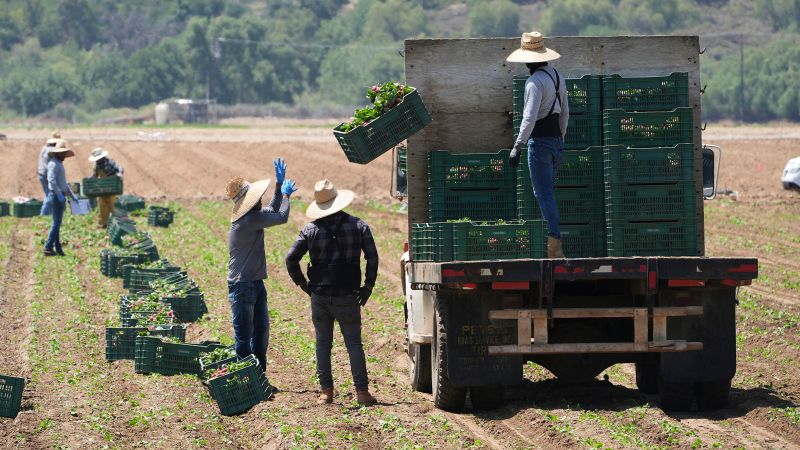The Trump administration’s immigration policies have stirred intense conversations regarding their impact on essential workforce sectors, particularly the reliance on migrant labor. Central to this discussion is President Donald Trump’s hardline immigration stance, which, while aiming to enhance border security, simultaneously poses challenges for industries dependent on migrant workers. This duality is indicative of the complex dynamics at play as officials within the administration navigate the competing demands of law enforcement and economic stability.
Within this framework, President Trump has exhibited ambivalence toward migrant workers, often suggesting that sectors such as agriculture require protection for their labor force. Despite initiating a campaign that calls for rigorous immigration enforcement through ICE raids, Trump has acknowledged the dilemma faced by industries employing these workers—expressing concern over farmers who have depended on certain undocumented migrants for years. This sentiment reflects an understanding that while the administration pushes for enforcement, significant segments of the US economy are reliant on the contributions of these workers.
Sources indicate that senior officials have engaged in discussions with stakeholders from various industries, navigating the intricacies of immigration reform aimed at finding a feasible solution for the undocumented workforce. However, the reality remains that without legislative support from Congress, any measures taken may be insufficient to address the deep-rooted issues stemming from migrant labor dependence. Despite the intent to bolster border security—a top concern among hardline immigration advocates—the challenge lies in balancing those interests with the need for a stable workforce in crucial industries.
In statements from White House representative Abigail Jackson, the administration underscores Trump’s dual commitment to ensuring that farmers have access to essential labor while simultaneously focusing on deporting dangerous criminal elements. Jackson emphasized that American farmers play a vital role in sustaining the country’s food supply and economy, thereby necessitating policies that protect their interests. This reassurance is particularly essential given the significant number of undocumented workers in critical sectors such as agriculture, food processing, and construction.
The landscape of labor in the U.S. reveals that undocumented immigrants constitute approximately 4% to 5% of the entire workforce, and their absence in vital industries could inflict severe repercussions, including shortages and price increases, as highlighted by research from Goldman Sachs. Alarm bells have been raised by industry representatives regarding ICE’s sweeping raids, which have adversely affected undocumented workers lacking criminal records, showing an acute awareness of the complexities involved in the administration’s immigration strategy.
The tension escalates as administrative representatives like Kip Eideberg of the Association of Equipment Manufacturers relay messages about the significant implications of mass deportations on labor availability in manufacturing and agriculture. Eideberg metaphorically describes the dilemma as being “between a rock and a hard place,” where strengthening manufacturing initiatives hinges on the availability of labor that mass deportations threaten to eradicate.
Acknowledging the growing fears among industrious sectors, Trump and other officials engaged in dialogue have proposed initiatives to create pathways for legal status for certain undocumented workers, particularly those with longstanding ties to industries. Ideas floated include developing programs for farmers to guarantee laborers’ availability; however, the execution of such initiatives sparks significant debate, particularly among immigration hardliners wary of any form of perceived amnesty.
The conflicting narratives within the administration, particularly between figures like Stephen Miller—an architect of stringent immigration policy—and agriculture representatives, demonstrate the ongoing struggle to reconcile varying priorities. While some members of Trump’s administration advocate for aggressive immigration enforcement, others utilize their platforms to advocate for labor needs, thereby highlighting the necessity for a comprehensive approach that addresses both enforcement and industry requirements.
In conclusion, the pressing need for an effective immigration policy reform that considers the vast influence of migrant labor on critical sectors remains a complicated challenge for the Trump administration. Despite his tough-on-immigration image, Trump’s attempts to mediate between industry needs and enforcement goals reveal a tension fundamental to understanding the impact of immigration policies across America’s workforce landscape. As agencies like ICE continue their operations, and industries express their concerns, the path forward necessitates a more synchronized effort that bridges the divide between security and economic functionality within the nation.











